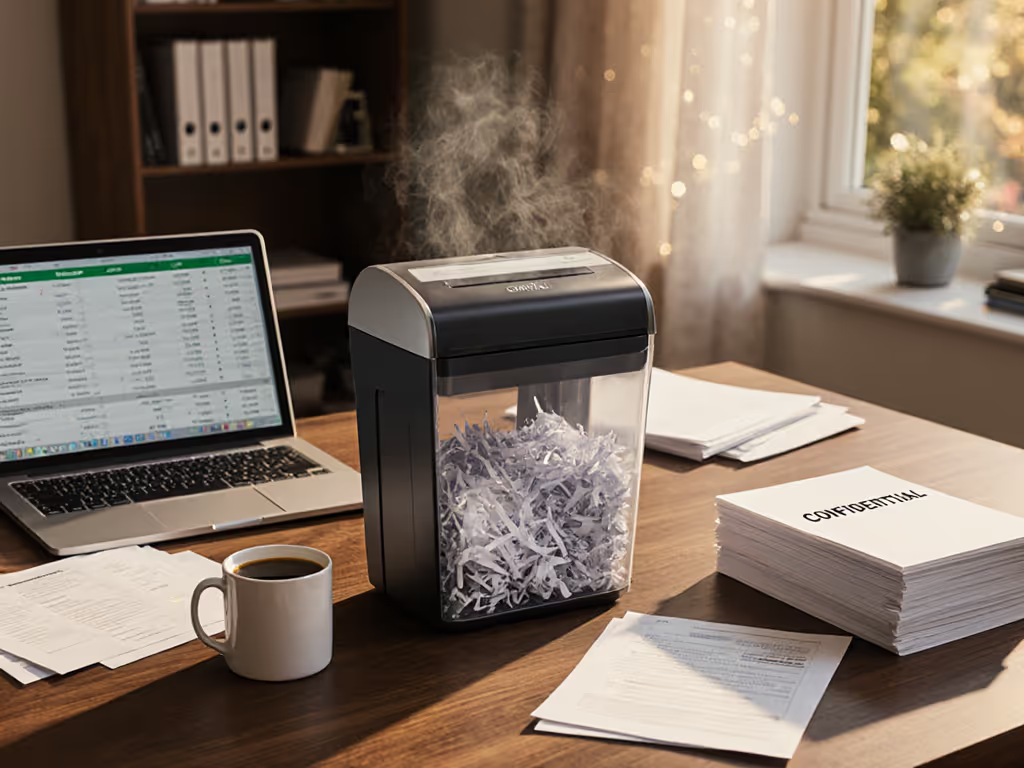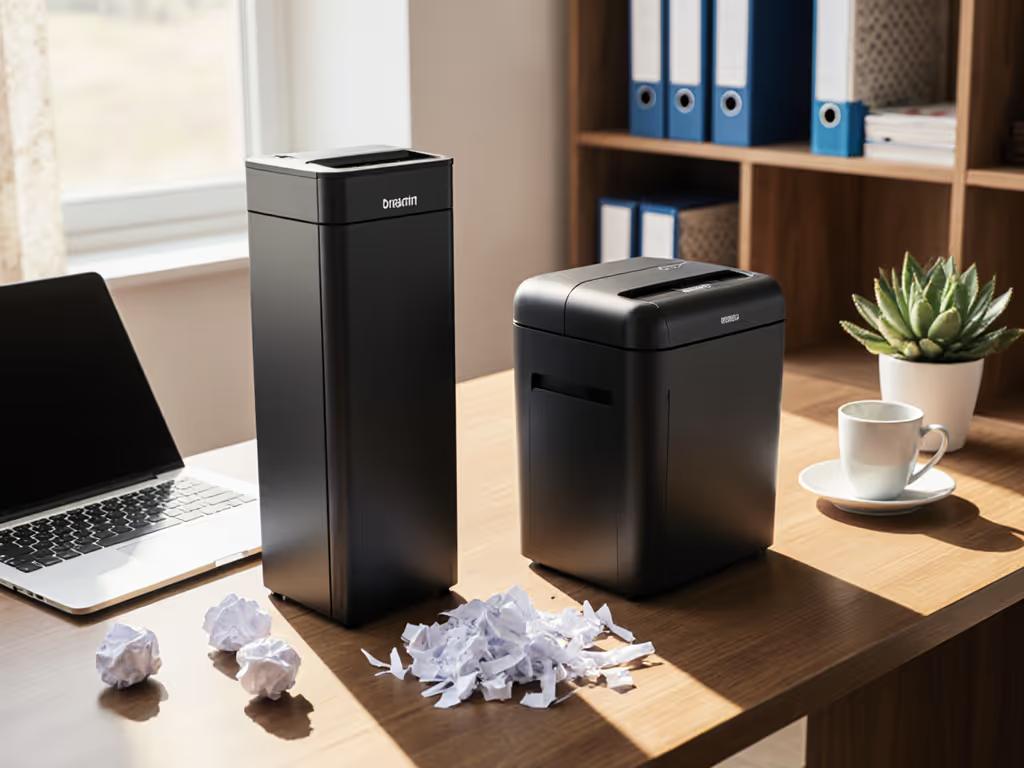
Industrial vs Commercial Shredders: Avoid Costly Overheating
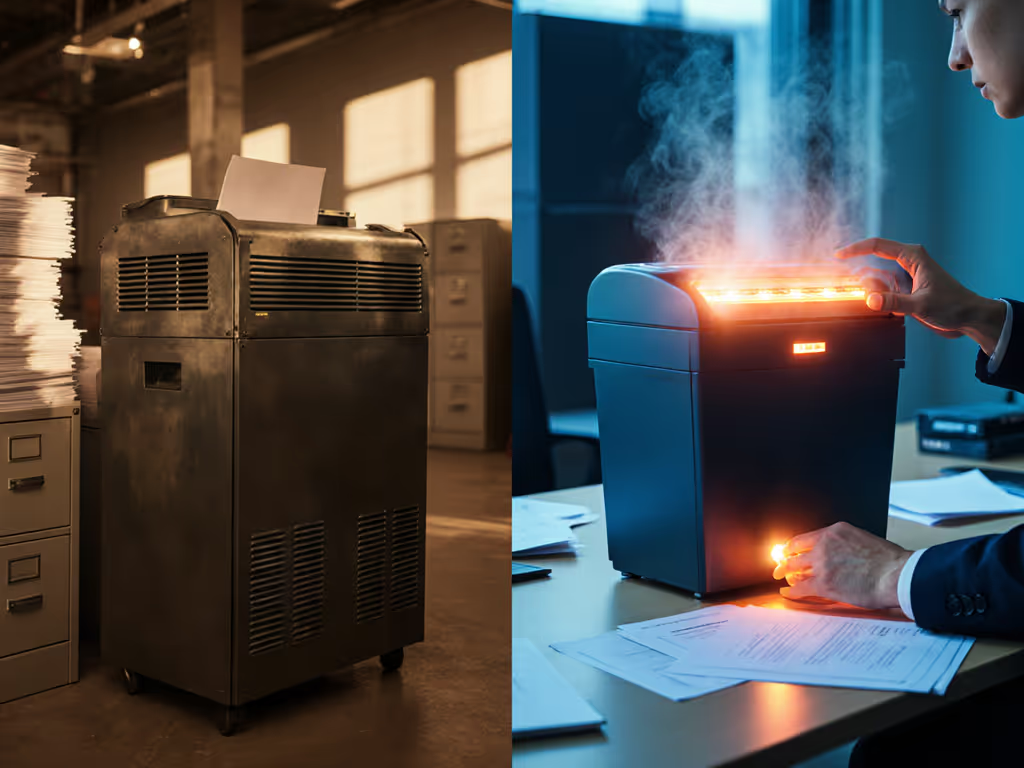
Selecting the right document destruction equipment demands careful analysis of operational needs against machine specifications. When evaluating industrial shredders versus commercial units, the most frequent, and costly, miscalculation I see is overheating due to mismatched duty cycles. Industrial shredders built for continuous operation are fundamentally different from large paper shredders designed for office environments. Understanding these distinctions prevents workflow disruption and ensures proper document security aligned with your actual risk profile.
During a recent records audit at a mid-sized healthcare practice, I noticed their policy was the simplest part of the review, simply because we'd mapped document categories to appropriate DIN levels with clear bin labeling. The auditor nodded, moved on, and I was reminded that good privacy practice should be boring by design. No drama, just the right cut, used consistently, with simple proofs.
Understanding Fundamental Differences: Purpose-Driven Design
What truly separates industrial shredders from commercial models?
The distinction isn't merely about size, it's about operational philosophy. Industrial shredders operate as continuous production machinery with robust thermal management systems, while commercial shredders follow intermittent use patterns matching office workflows. Industrial units feature dual-motor systems, beefier cooling mechanisms, and industrial-grade bearings that withstand 8+ hour shifts. Commercial shredders optimize for footprint, noise reduction, and user-friendly interfaces suitable for office environments where shredding occurs in bursts rather than continuous operation.
Industrially-rated machines process thousands of kilograms per hour through conveyor-fed systems, while even 'heavy-duty' commercial models rarely exceed 90 sheets per batch. This difference in throughput capability reflects fundamentally different engineering approaches to heat dissipation (a critical factor when avoiding costly downtime).
How does DIN 66399 classification inform my shredder selection?
Document security levels shouldn't dictate your machine type, they should inform the cutting mechanism once you've established your operational requirements. The DIN 66399 standard specifies seven security levels (P-1 through P-7) based on particle size and shape. Most offices require P-4 (3.9 x 50mm strips or 16mm² particles), while government/military applications might demand P-7 (0.8 x 12mm).
'Match the document risk to the shred, not the hype', this maxim has guided my practice for years. A healthcare office shouldn't deploy P-5 shredding for general patient records when P-4 suffices under HIPAA guidance. Proper risk category mapping prevents unnecessary overspending on industrial-grade security where commercial equipment meets requirements.
The Overheating Equation: Capacity, Duty Cycle & Real-World Performance
How do commercial shredder capacity specifications mislead buyers?
Manufacturer capacity ratings often represent ideal laboratory conditions, not real-world performance. A '12-sheet capacity' shredder might handle 12 pristine 20-lb paper sheets, but struggle with 8 sheets of 24-lb cardstock, envelopes, or paper with staples. The critical factor is continuous run time, the period a machine operates before thermal overload triggers shutdown.
Most commercial shredders follow a 1:10 duty cycle (1 minute running, 10 minutes cooling). In small office environments, this works acceptably. However, when monthly document destruction exceeds 5,000 sheets, you'll encounter constant cooling interruptions. Industrial shredders maintain 1:1 or even continuous duty cycles, eliminating these workflow interruptions.
What thermal indicators should I monitor beyond advertised run times?
Security without theater means examining the details others ignore: the thermal cutoff temperature, cooling fan design, and motor insulation class.
Look beyond marketing claims of 'continuous run time' to the actual thermal specifications:
- Motor insulation class: Look for Class F or H (155°C or 180°C maximum operating temperature)
- Thermal cutoff threshold: Should exceed 130°C to prevent premature shutdowns
- Cooling system type: Patented cooling systems with dedicated airflow channels outperform basic fan-assisted models
Many commercial units list '30-minute continuous run time' but fail to mention this applies only to 6-sheet batches. Real-world testing often reveals thermal shutdowns after 8-10 minutes with mixed document types. This is where business shredder ROI calculations unravel (when staff stands idle waiting for cooling periods).
How does environmental temperature affect shredder performance?
Ambient temperature significantly impacts thermal performance. A unit operating reliably at 20°C (68°F) may overheat at 27°C (80°F) due to reduced cooling efficiency. Industrial facilities account for this with thermostatically controlled environments, while office shredders often operate in variable conditions. Proper chain-of-custody reminders should include environmental monitoring, not just document tracking.
Strategic Selection Framework: Matching Equipment to Document Profile
What document destruction equipment metrics predict actual performance?
Move beyond sheet capacity to these critical metrics:
- Shred cycle time: Total time to process a standard batch (feed + shred + ejection)
- Mean cycles between failures: Look for 10,000+ cycles for commercial units
- Thermal recovery rate: Minutes required to reset after thermal shutdown
- Mixed material tolerance: Ability to handle paper clips, staples, and envelopes without jamming
Document destruction equipment designed for commercial environments emphasizes quiet operation (<58 dB), compact footprint, and user safety features. Industrial models prioritize throughput and durability over noise reduction, often operating at 75+ dB, unacceptable in office settings but expected in warehouse environments.
How do I calculate my actual monthly shredding volume?
Begin with plain-language audit notes from your records management process. Track for one week:
- Daily documents per employee requiring secure destruction
- Document types (statements, reports, identity documents)
- Average pages per document
- Peak periods (month-end, tax season)
Multiply daily average by 22 working days, then apply a 1.5x peak factor. If the result exceeds 7,000 sheets monthly, industrial shredders become economically justified. Below 2,000 sheets, commercial units typically provide better business shredder ROI through lower acquisition cost and energy efficiency.
Practical Considerations: Home vs. Office Implementation
What home office shredders prevent overheating during intensive sessions?
Remote professionals often push commercial units beyond design limits. For home offices processing 200+ sheets weekly, consider models with advanced thermal management like the Bonsaii 12 Sheet Micro Cut Paper Shredder. Its patented cooling system supports 60-minute continuous run time, a rarity in commercial-grade units, making it suitable for intensive home office sessions without thermal shutdowns.
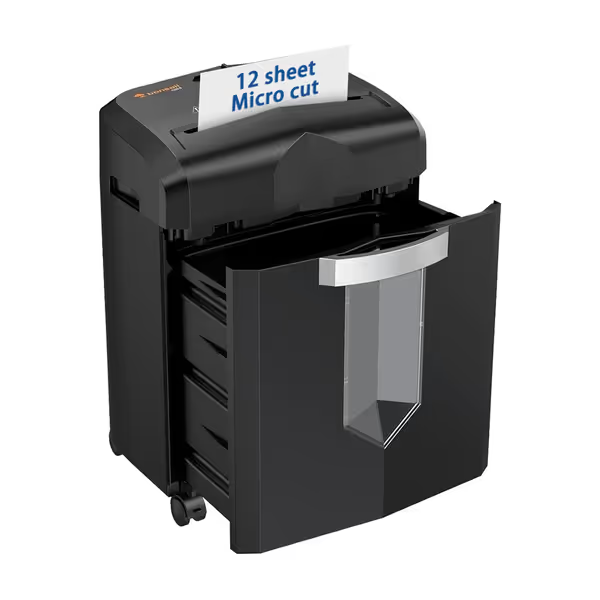
Bonsaii 12-Sheet Micro-Cut Shredder
This unit exemplifies right-sized security for most home office needs with P-4 equivalent micro-cut capabilities (5 x 12mm particles), exceeding typical commercial security requirements while maintaining office-friendly noise levels. Its universal casters and compact footprint address space constraints common in home offices, while the visible trash window provides simple chain-of-custody reminders during operation.
Should small businesses lease industrial shredders or purchase commercial units?
The answer depends on your document destruction volume versus operational flexibility needs. For businesses processing 10,000+ sheets monthly, leasing industrial shredders often provides better business shredder ROI through:
- Eliminating thermal downtime during peak periods
- Reducing long-term maintenance costs
- Providing predictable budgeting through fixed monthly payments
However, for businesses under 5,000 sheets monthly, purchasing commercial units with higher thermal capacity delivers lower total cost of ownership. Many small firms mistakenly believe industrial shredders offer 'room to grow', but the significant cost premium and space requirements often outweigh future-proofing benefits.
How do I implement proper chain-of-custody for document destruction?
Regardless of equipment type, consistent documentation trumps machinery specifications. Implement these simple practices:
- Document categories mapped to DIN levels: Create a one-page reference chart
- Bin labeling system: Color-coded by security level
- Pickup logs: Simple date/initials for each destruction batch
- Vendor verification: For outsourced destruction, require certificate of destruction
These plain-language audit notes transformed document destruction from a compliance headache to an operational strength at the clinic I managed, simply because we made it boringly consistent.
Final Considerations: Avoiding Costly Mismatches
The most expensive shredder mistake isn't overspending, it's buying equipment that fails during critical workflows. Industrial shredders provide unparalleled throughput but create noise and space challenges in office environments. Commercial units deliver office-friendly operation but falter when pushed beyond design limits.
When evaluating options, ask: 'Does this match my actual document destruction pattern, not my aspirational paper reduction goals?' Proper risk category mapping prevents both security gaps and unnecessary expenditures. Remember that security should be right-sized, consistent, and boring, in the best way.
Related Articles

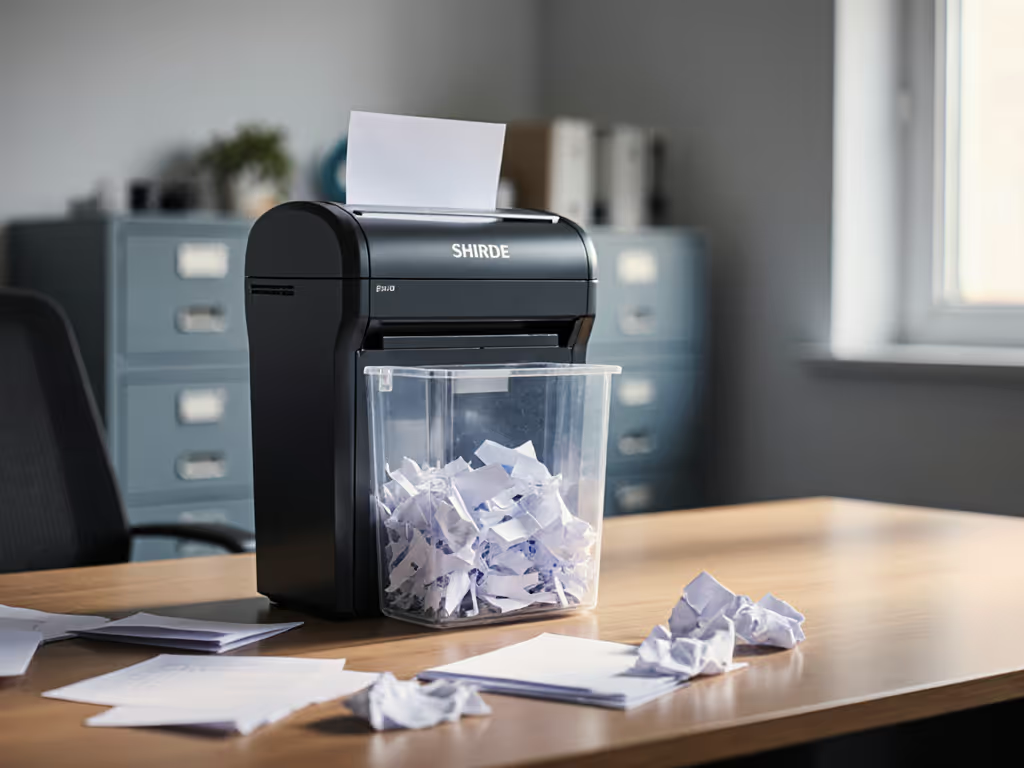
Most Reliable Shredder Brands: Failure Rates and Real-World Performance
Learn how to choose a shredder that holds up in real offices - using failure-rate and jam‑risk data to compare brands - and adopt quick, 30‑second habits that, paired with the right features, can cut jams by up to 73% while reducing downtime and security risks.
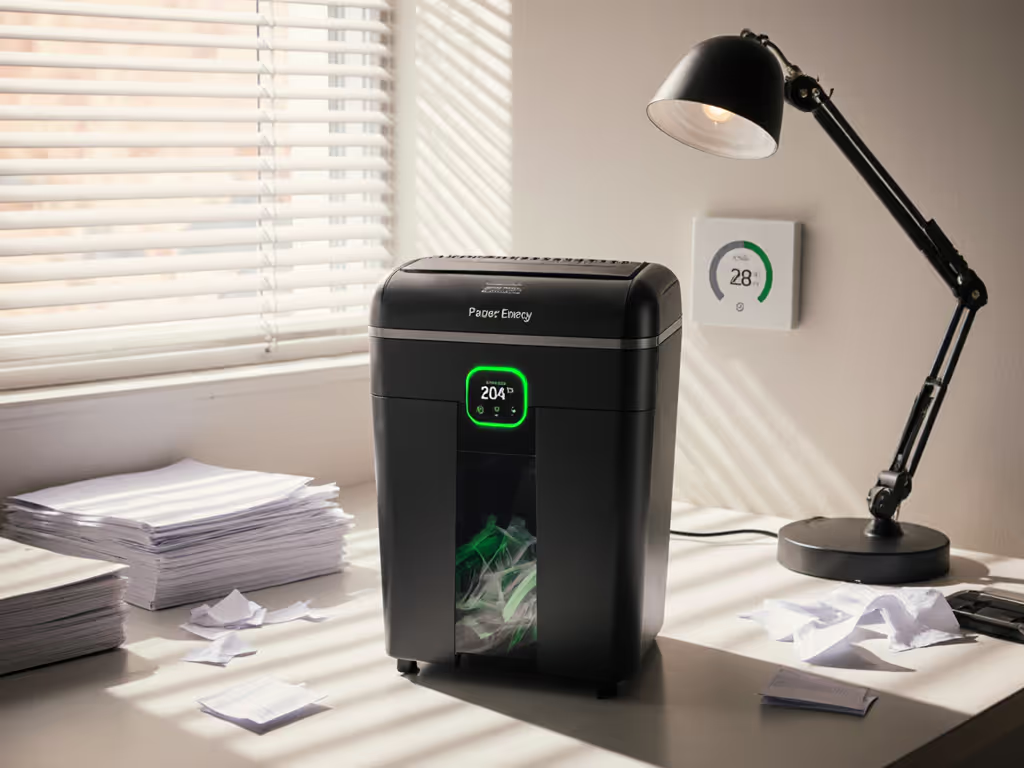
Home Shredder Electricity Compared: Auto-Off Performance
Cut home shredder energy use by choosing intelligent auto-off and thermal management and matching DIN security to actual document risk. Use batching, pre-sorting, and regular maintenance to save power without sacrificing privacy.
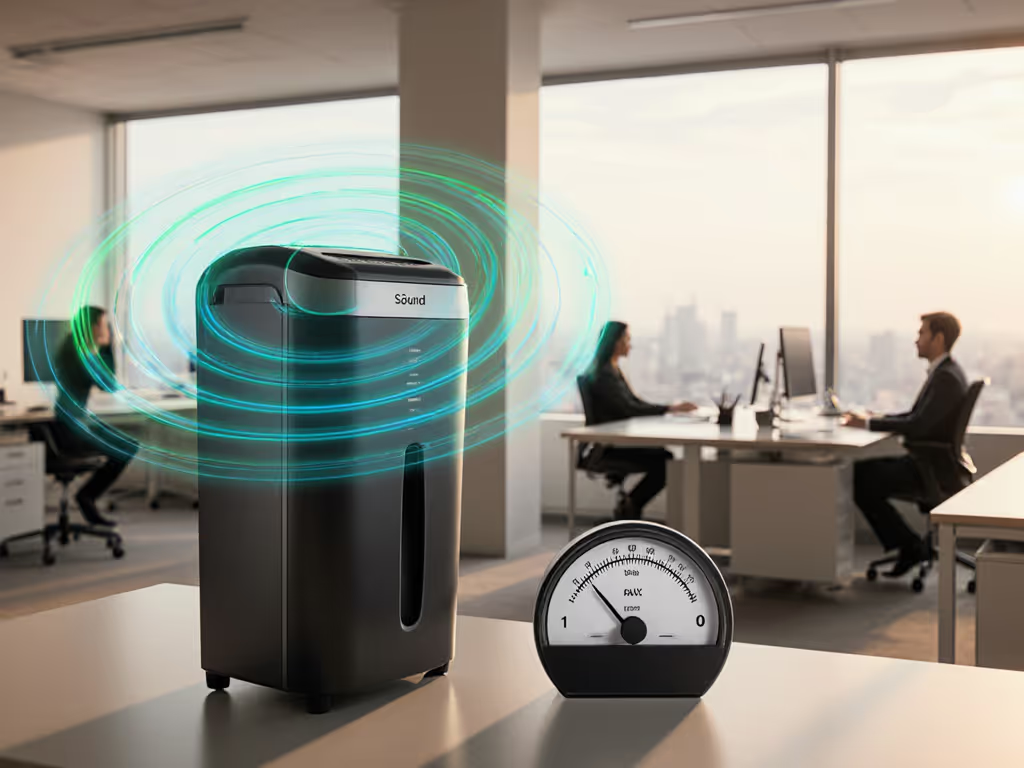
Shredder Decibel Comparison: Quiet Office Models Tested
Shredder noise is a compliance and productivity issue, not a nicety. Use decibel benchmarks, P‑level guidance, and duty-cycle tips to select a quiet (<= 60 dB) P‑4 model that matches your office and gets used daily.
